
Discord-AI-Selfbot
A Discord chatbot / selfbot that allows users to talk to AI powered by Groq API which uses Meta Llama-3 or use your own ChatGPT API key. The AI runs on a genuine Discord account, not a bot account and so it can be put in any server without any permissions! Try it out at: https://discord.gg/yUWmzQBV4P
Stars: 120
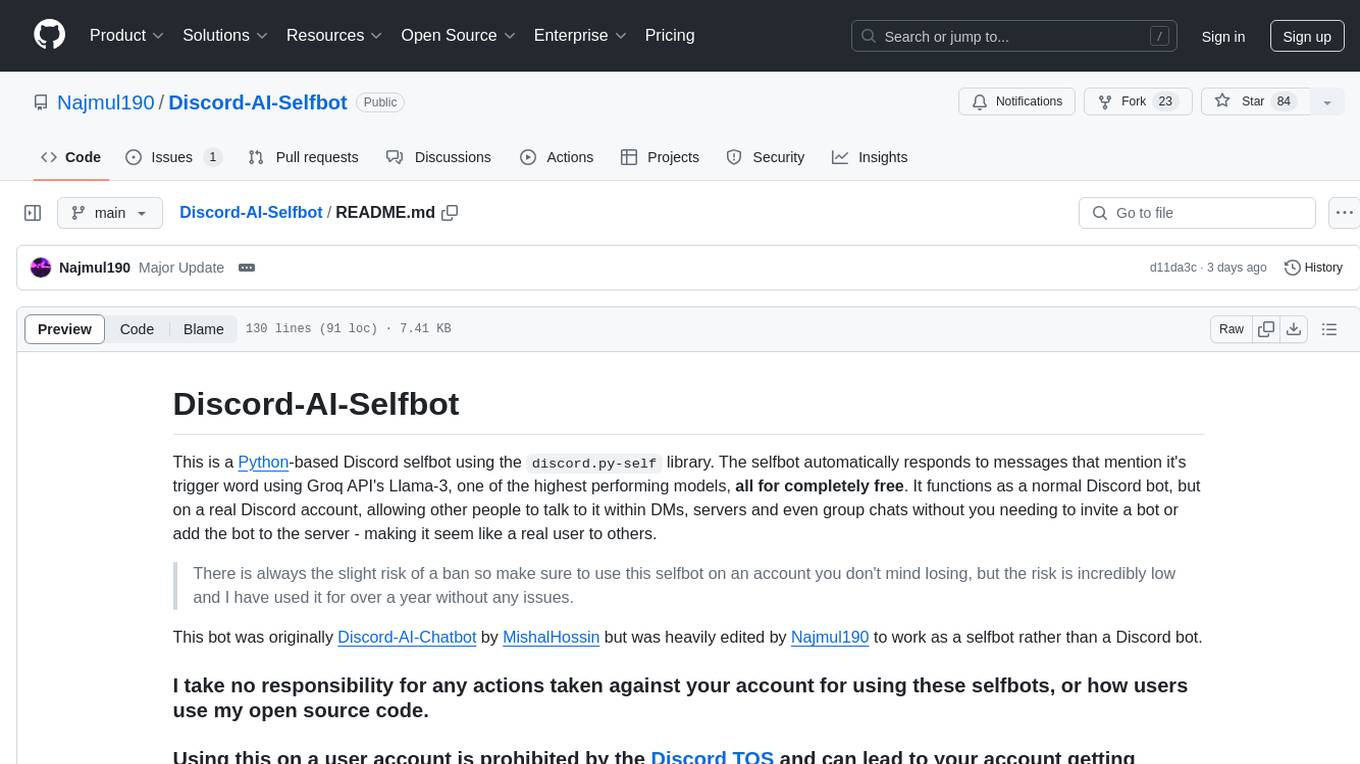
Discord-AI-Selfbot is a Python-based Discord selfbot that uses the `discord.py-self` library to automatically respond to messages mentioning its trigger word using Groq API's Llama-3 model. It functions as a normal Discord bot on a real Discord account, enabling interactions in DMs, servers, and group chats without needing to invite a bot. The selfbot comes with features like custom AI instructions, free LLM model usage, mention and reply recognition, message handling, channel-specific responses, and a psychoanalysis command to analyze user messages for insights on personality.
README:
This is a Python-based Discord selfbot using the discord.py-self library. The selfbot automatically responds to messages that mention it's trigger word using Groq API's Llama-3, one of the highest performing models, all for completely free. You can also add your own API key for ChatGPT functionality, but this is not required. It functions as a normal Discord bot, but on a real Discord account, allowing other people to talk to it within DMs, servers and even group chats without you needing to invite a bot or add the bot to the server - making it seem like a real user to others.
There is always the slight risk of a ban when using selfbots, so make sure to use this selfbot on an account you don't mind losing, but the risk is incredibly low and I have used it for over a year without any issues.
I take no responsibility for any actions taken against your account for using these selfbots or how users use my open-source code.
Using this on a user account is prohibited by the Discord TOS and can lead to your account getting banned in very rare cases.
Project made by:
If you have any questions or need assistance, please join our dedicated Discord server. You can ask your questions there and leave once you have the help you need, or stay and be part of the community!
You can also try out this project in this server, in the #italiano channel! Click the image below to join.
Note: This analysis is based on the user's message history and is not 100% accurate. It is just for fun and should not be taken seriously.
- [x] Discord Selfbot: Runs on a genuine Discord account, allowing you to use it without even needing to invite a bot.
- [x] Custom AI Instructions: You can replace the text inside of
instructions.txtand make the AI act however you'd like! - [x] Free LLM Model: Enjoy the powerful capabilities of this language model without spending a dime.
- [x] Mention Recognition: The bot only responds when you mention it or say its name.
- [x] Reply Recognition: If replied to, the bot will continue to reply to you. It's like having a conversation with a real person!
- [x] Message Handling: The bot knows when you're replying to someone else, so it won't cause confusion. It's like having a mind reader in your server; It can also handle numerous messages at once!
- [x] Channel-Specific Responses: Use the
~toggleactivecommand to pick what channel the bot responds in. - [x] Psychoanalysis Command: Use the
~analysecommand to analyse a mentioned user's messages and find insights on their personality. It's like having a therapist in your server! - [x] Runs on Meta AI's Llama-3: The bot uses the Llama-3 model from Meta AI, which is one of the most powerful models available.
- [x] Secure Credential Management: Keep your credentials secure using environment variables.
- [x] Crafted with Care: Made with lots of love and attention to detail.
- analyse [user] - Analyze a user's message history and provides a - gical profile
- wipe - Clears history of the bot
- ping - Shows the bot's latency
- toggleactive [channelID] - Toggle the current channel to the list of active channels
- toggledm - Toggle if the bot should be active in DM's or not
- togglegc - Toggle if the bot should be active in group chats or not
- ignore [user] - Stop a user from using the bot
- reload - Reloads all cogs
- restart - Restarts the entire bot
- Go to the Releases page and download the latest release for your operating system.
- Extract the files to a folder of your choice, using 7Zip or Windows Explorer.
- Go to Discord and login to the account you want the token of
- Press
Ctrl + Shift + I(If you are on Windows) orCmd + Opt + I(If you are on a Mac). - Go to the
Networktab - Type a message in any chat, or change server
- Find one of the following headers:
"messages?limit=50","science"or"preview"under"Name"and click on it - Scroll down until you find
"Authorization"under"Request Headers" - Copy the value which is your token
- Go to Groq and sign up for a free account
- Get your API key, which should look like
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(this is an example key, it isn't real)
- Simply run "Discord AI Selfbot.exe" and follow the instructions in the console to set up the bot.
If you want to set up the bot manually because you don't trust the executable or want to edit the code yourself, follow the instructions below:
git clone https://github.com/najmul190/Discord-AI-Selfbot
cd Discord-AI-Selfbot
- Go to Discord and login to the account you want the token of
- Press
Ctrl + Shift + I(If you are on Windows) orCmd + Opt + I(If you are on a Mac). - Go to the
Networktab - Type a message in any chat, or change server
- Find one of the following headers:
"messages?limit=50","science"or"preview"under"Name"and click on it - Scroll down until you find
"Authorization"under"Request Headers" - Copy the value which is your token
- Go to Groq and sign up for a free account
- Get your API key, which should look like
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(this is an example key, it isn't real)
Windows:
-
Simply open
run.batif you're on Windows. This will install all pre-requisites, guide you through the process of setting up the bot and run it for you. -
If
run.batdoesn't work, then open CMD and runcd Discord-AI-Selfbotto change directory to the bot files directory -
Create a virtual environment by running
python -m venv bot-env -
Activate the virtual environment by running
bot-env\Scripts\activate.bat -
Run
pip install -r requirements.txtto install all the dependencies -
Fill out example.env with your own credentials and rename it to .env
-
Run the bot using
python3 main.py
Linux:
- If you're on Linux, then run
cd the\bot\files\directoryto change directory to the bot files directory - Create a virtual environment by running
python3 -m venv bot-env - Activate the virtual environment by running
source bot-env/bin/activate - Run
pip install -r requirements.txtto install all the dependencies - Fill out example.env with your own credentials and rename it to .env
- Run the bot using
python3 main.py
- To activate it in a channel use ~toggleactive channelid (channelid is optional) or manually add the channel ID in
channels.txt - To see all commands use ~help
- Bear in mind that the bot will only respond to other accounts and not itself, including any commands.
- You must also set a trigger word within the
.env, this is the word that the bot will respond to. For example, if you set the trigger word toJohn, people must say "HeyJohn, how are you today?" for the bot to respond.
To change the personality of the bot and set custom instructions, simply go into the config folder and edit the default instructions in instructions.txt to whatever you want!
If you appreciate this project and want to support its development, feel free to donate by clicking this button!
For Tasks:
Click tags to check more tools for each tasksFor Jobs:
Alternative AI tools for Discord-AI-Selfbot
Similar Open Source Tools

Discord-AI-Selfbot
Discord-AI-Selfbot is a Python-based Discord selfbot that uses the `discord.py-self` library to automatically respond to messages mentioning its trigger word using Groq API's Llama-3 model. It functions as a normal Discord bot on a real Discord account, enabling interactions in DMs, servers, and group chats without needing to invite a bot. The selfbot comes with features like custom AI instructions, free LLM model usage, mention and reply recognition, message handling, channel-specific responses, and a psychoanalysis command to analyze user messages for insights on personality.
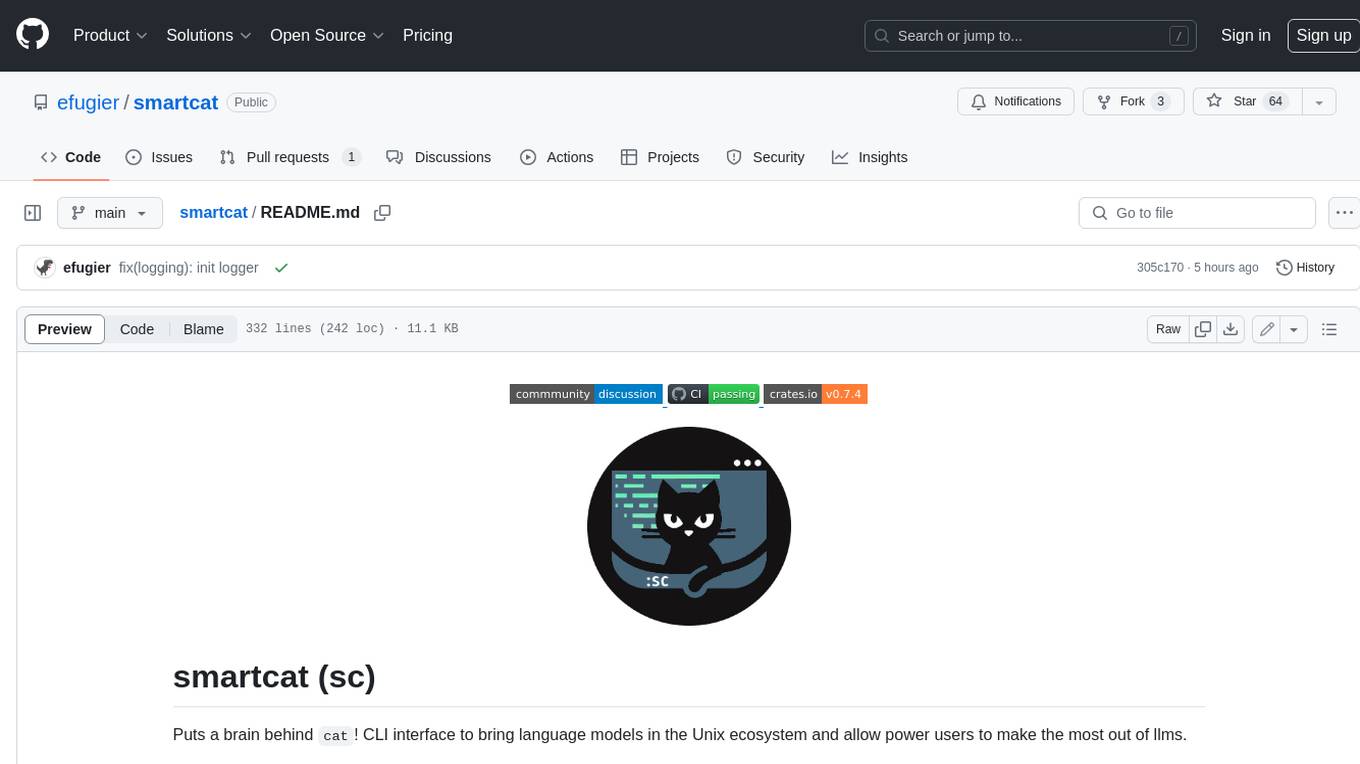
smartcat
Smartcat is a CLI interface that brings language models into the Unix ecosystem, allowing power users to leverage the capabilities of LLMs in their daily workflows. It features a minimalist design, seamless integration with terminal and editor workflows, and customizable prompts for specific tasks. Smartcat currently supports OpenAI, Mistral AI, and Anthropic APIs, providing access to a range of language models. With its ability to manipulate file and text streams, integrate with editors, and offer configurable settings, Smartcat empowers users to automate tasks, enhance code quality, and explore creative possibilities.
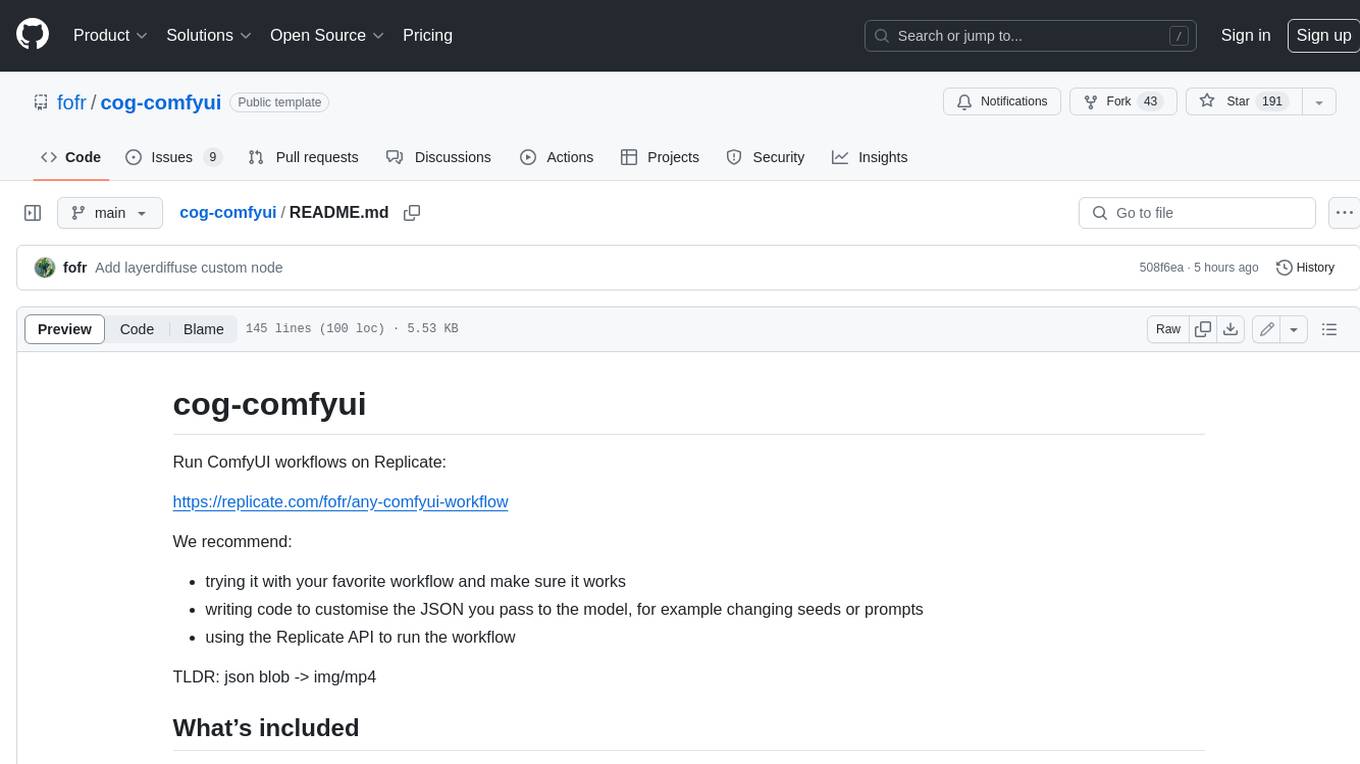
cog-comfyui
Cog-comfyui allows users to run ComfyUI workflows on Replicate. ComfyUI is a visual programming tool for creating and sharing generative art workflows. With cog-comfyui, users can access a variety of pre-trained models and custom nodes to create their own unique artworks. The tool is easy to use and does not require any coding experience. Users simply need to upload their API JSON file and any necessary input files, and then click the "Run" button. Cog-comfyui will then generate the output image or video file.

cog-comfyui
Cog-ComfyUI is a tool designed to run ComfyUI workflows on Replicate. It allows users to easily integrate their own workflows into their app or website using the Replicate API. The tool includes popular model weights and custom nodes, with the option to request more custom nodes or models. Users can get their API JSON, gather input files, and use custom LoRAs from CivitAI or HuggingFace. Additionally, users can run their workflows and set up their own dedicated instances for better performance and control. The tool provides options for private deployments, forking using Cog, or creating new models from the train tab on Replicate. It also offers guidance on developing locally and running the Web UI from a Cog container.
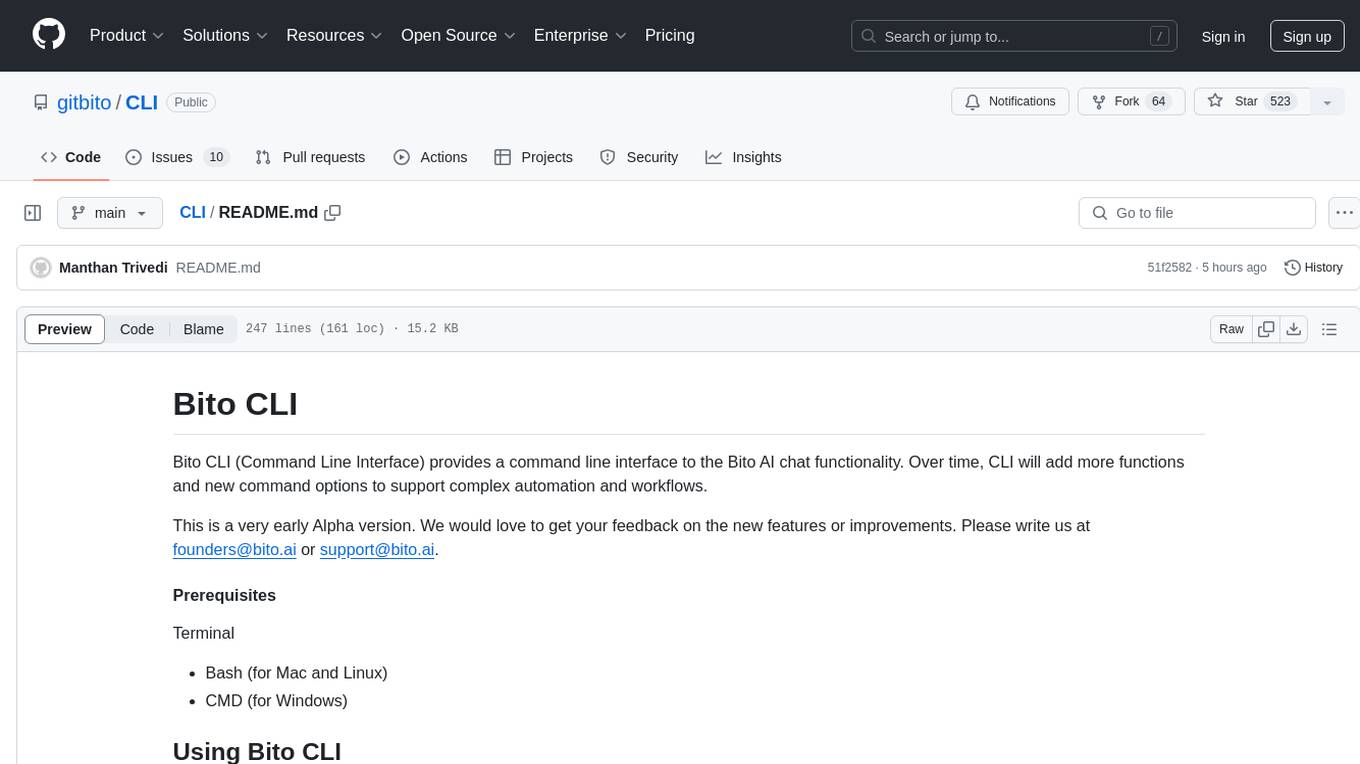
CLI
Bito CLI provides a command line interface to the Bito AI chat functionality, allowing users to interact with the AI through commands. It supports complex automation and workflows, with features like long prompts and slash commands. Users can install Bito CLI on Mac, Linux, and Windows systems using various methods. The tool also offers configuration options for AI model type, access key management, and output language customization. Bito CLI is designed to enhance user experience in querying AI models and automating tasks through the command line interface.
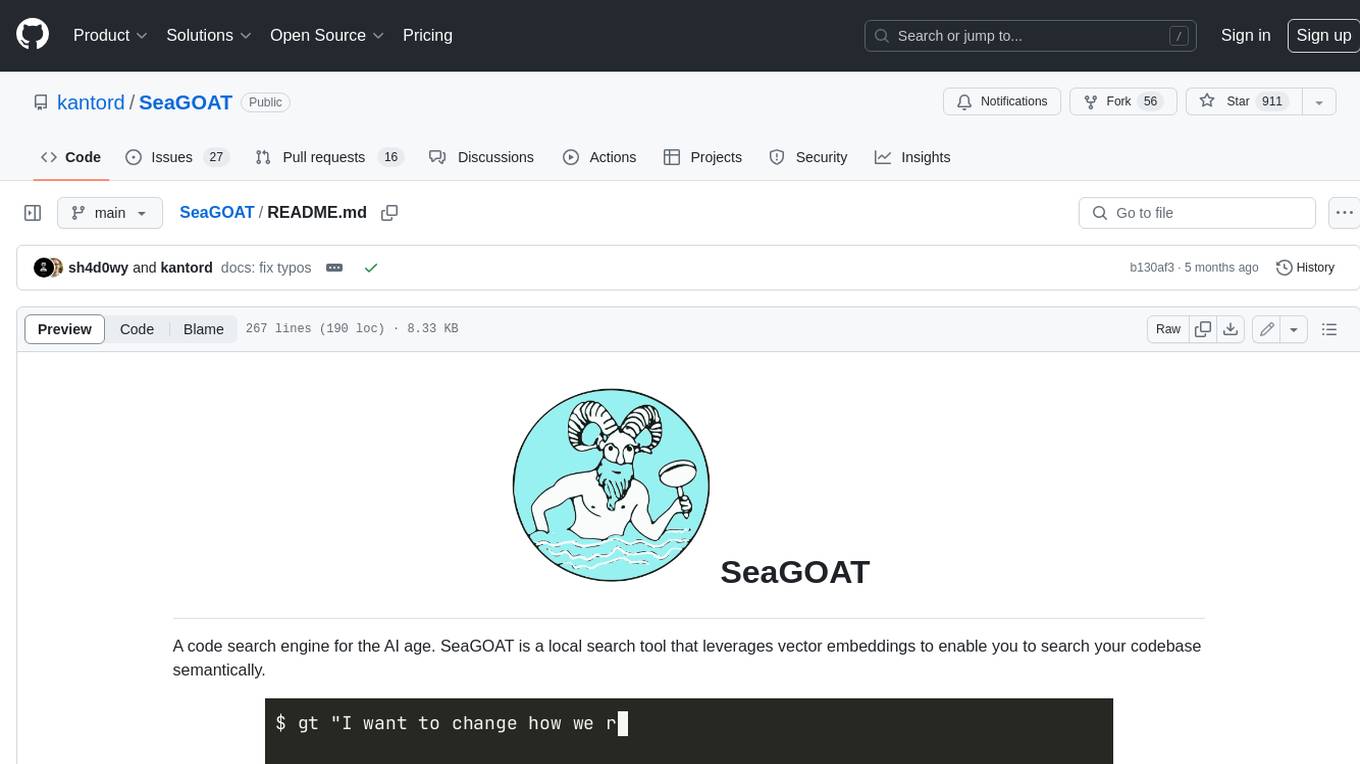
SeaGOAT
SeaGOAT is a local search tool that leverages vector embeddings to enable you to search your codebase semantically. It is designed to work on Linux, macOS, and Windows and can process files in various formats, including text, Markdown, Python, C, C++, TypeScript, JavaScript, HTML, Go, Java, PHP, and Ruby. SeaGOAT uses a vector database called ChromaDB and a local vector embedding engine to provide fast and accurate search results. It also supports regular expression/keyword-based matches. SeaGOAT is open-source and licensed under an open-source license, and users are welcome to examine the source code, raise concerns, or create pull requests to fix problems.
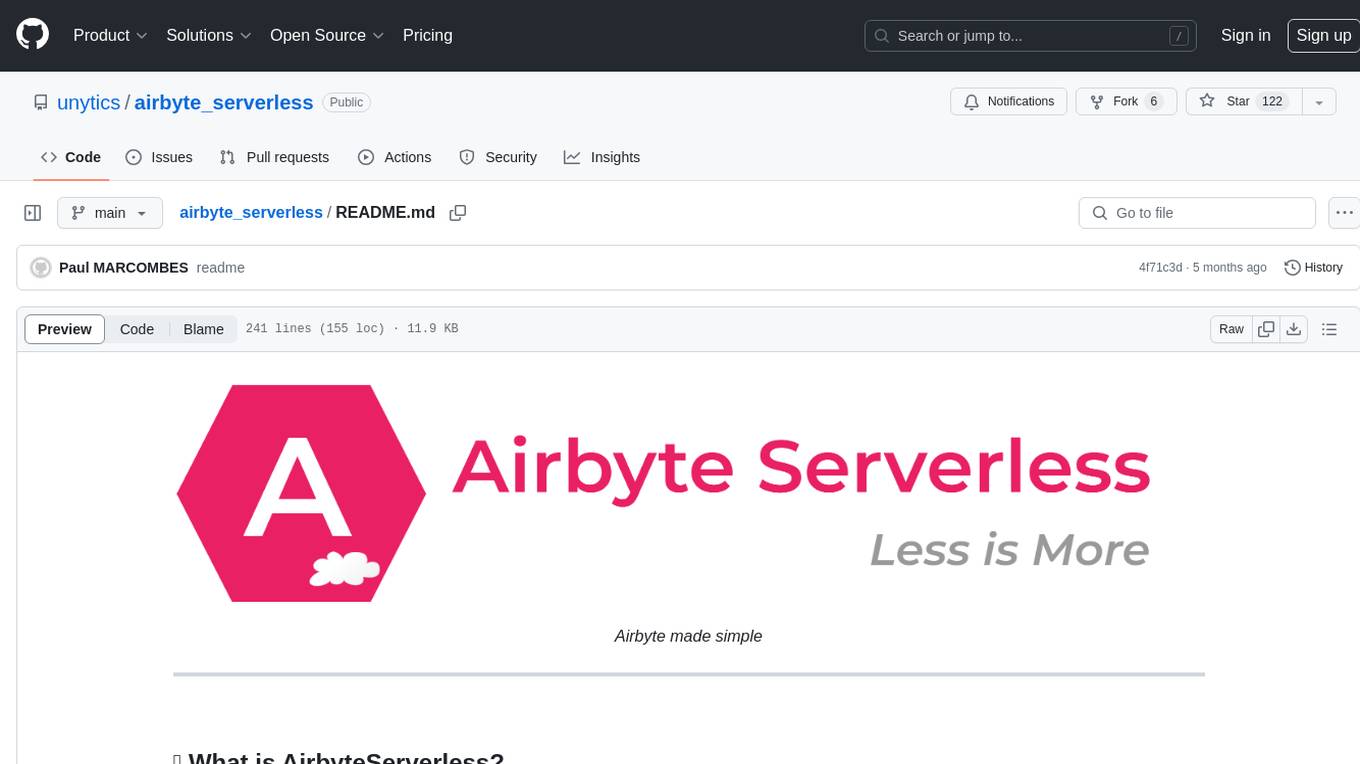
airbyte_serverless
AirbyteServerless is a lightweight tool designed to simplify the management of Airbyte connectors. It offers a serverless mode for running connectors, allowing users to easily move data from any source to their data warehouse. Unlike the full Airbyte-Open-Source-Platform, AirbyteServerless focuses solely on the Extract-Load process without a UI, database, or transform layer. It provides a CLI tool, 'abs', for managing connectors, creating connections, running jobs, selecting specific data streams, handling secrets securely, and scheduling remote runs. The tool is scalable, allowing independent deployment of multiple connectors. It aims to streamline the connector management process and provide a more agile alternative to the comprehensive Airbyte platform.
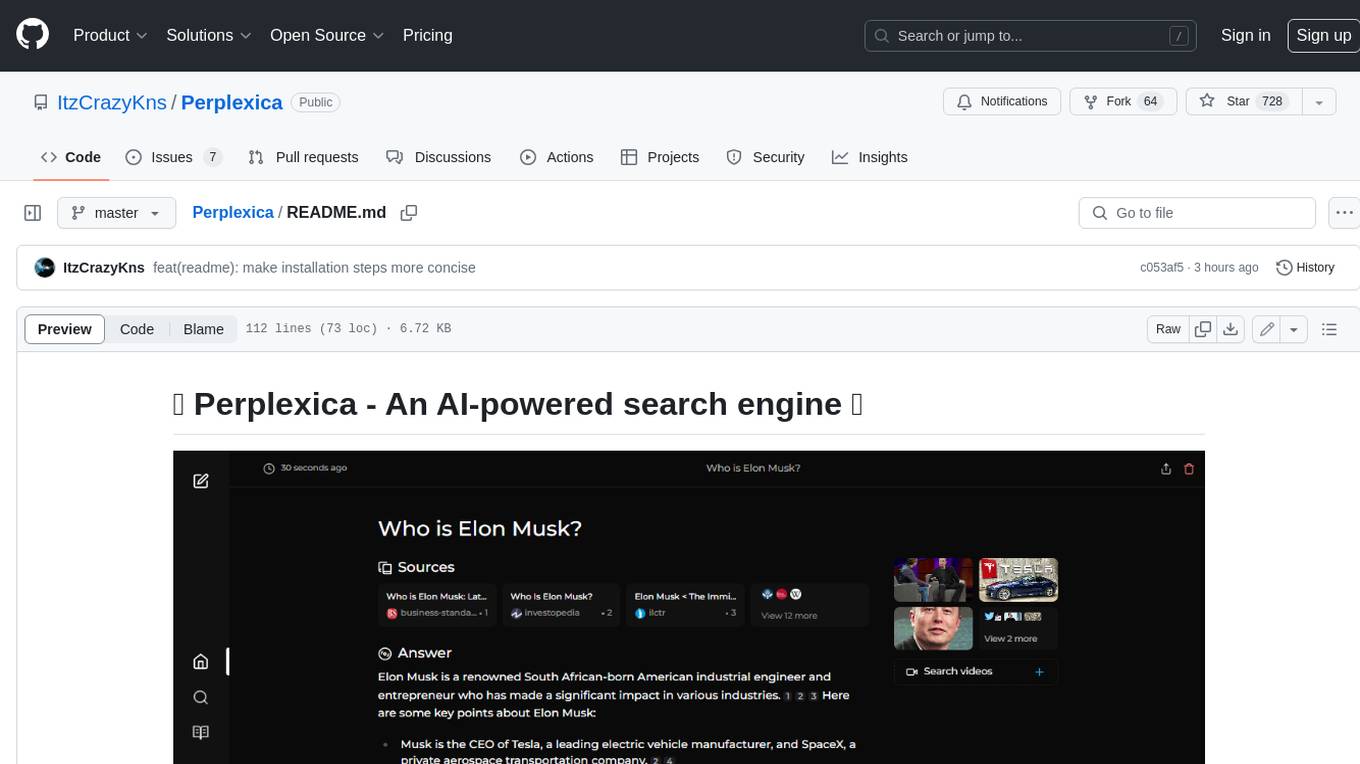
Perplexica
Perplexica is an open-source AI-powered search engine that utilizes advanced machine learning algorithms to provide clear answers with sources cited. It offers various modes like Copilot Mode, Normal Mode, and Focus Modes for specific types of questions. Perplexica ensures up-to-date information by using SearxNG metasearch engine. It also features image and video search capabilities and upcoming features include finalizing Copilot Mode and adding Discover and History Saving features.
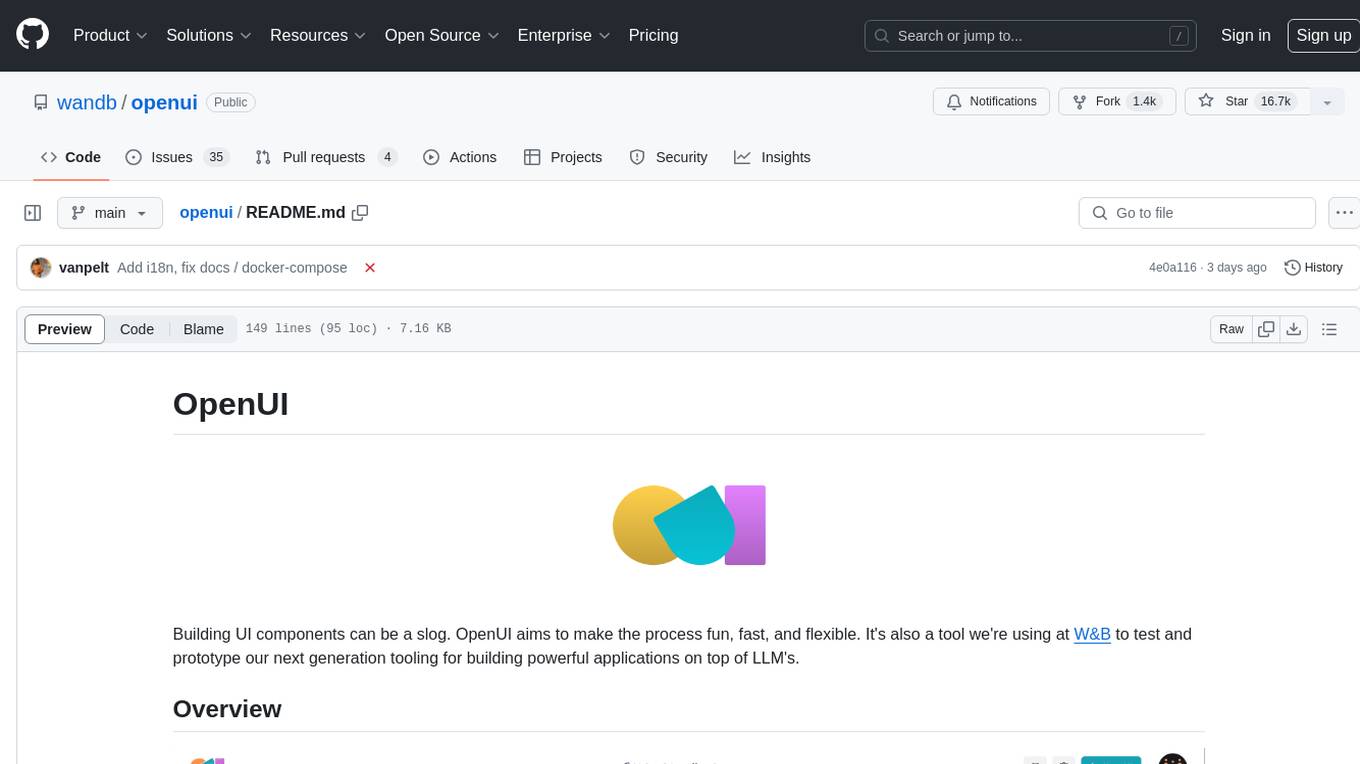
openui
OpenUI is a tool designed to simplify the process of building UI components by allowing users to describe UI using their imagination and see it rendered live. It supports converting HTML to React, Svelte, Web Components, etc. The tool is open source and aims to make UI development fun, fast, and flexible. It integrates with various AI services like OpenAI, Groq, Gemini, Anthropic, Cohere, and Mistral, providing users with the flexibility to use different models. OpenUI also supports LiteLLM for connecting to various LLM services and allows users to create custom proxy configs. The tool can be run locally using Docker or Python, and it offers a development environment for quick setup and testing.
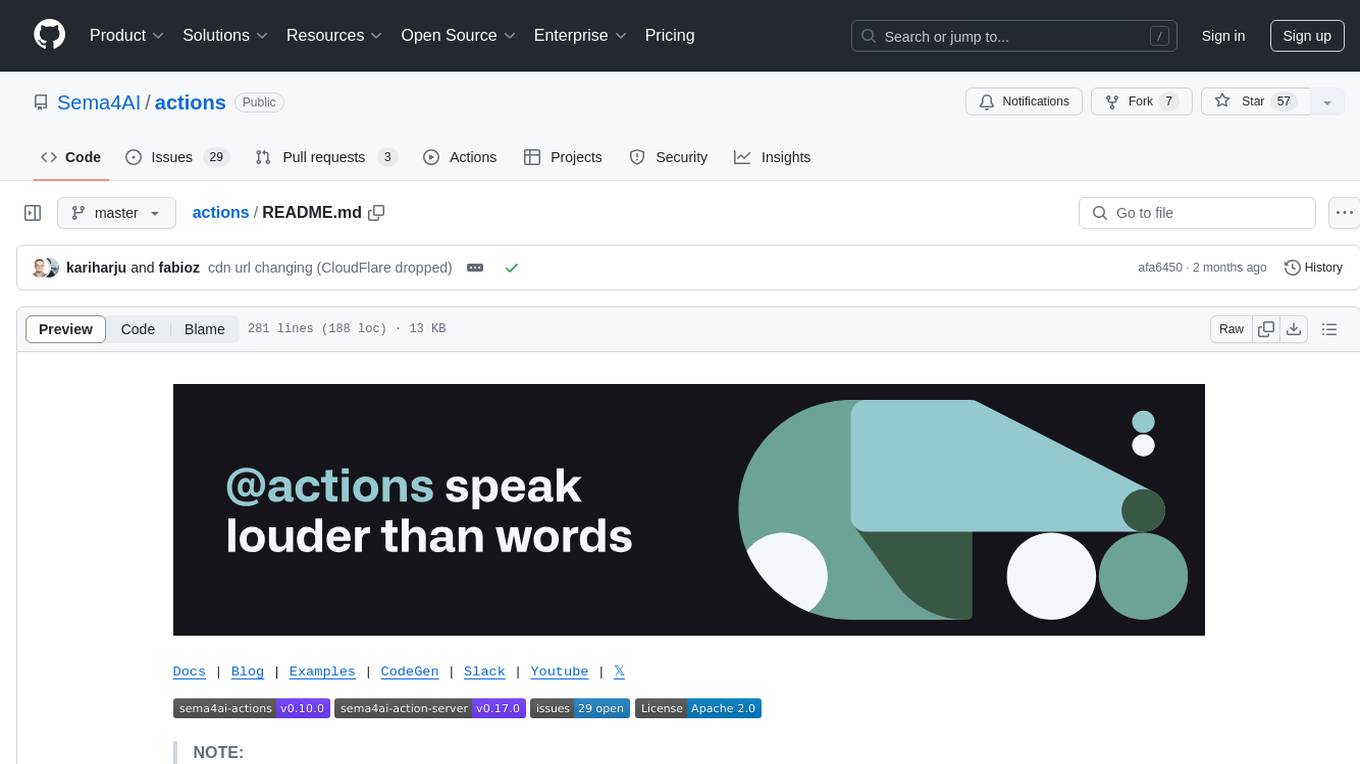
actions
Sema4.ai Action Server is a tool that allows users to build semantic actions in Python to connect AI agents with real-world applications. It enables users to create custom actions, skills, loaders, and plugins that securely connect any AI Assistant platform to data and applications. The tool automatically creates and exposes an API based on function declaration, type hints, and docstrings by adding '@action' to Python scripts. It provides an end-to-end stack supporting various connections between AI and user's apps and data, offering ease of use, security, and scalability.
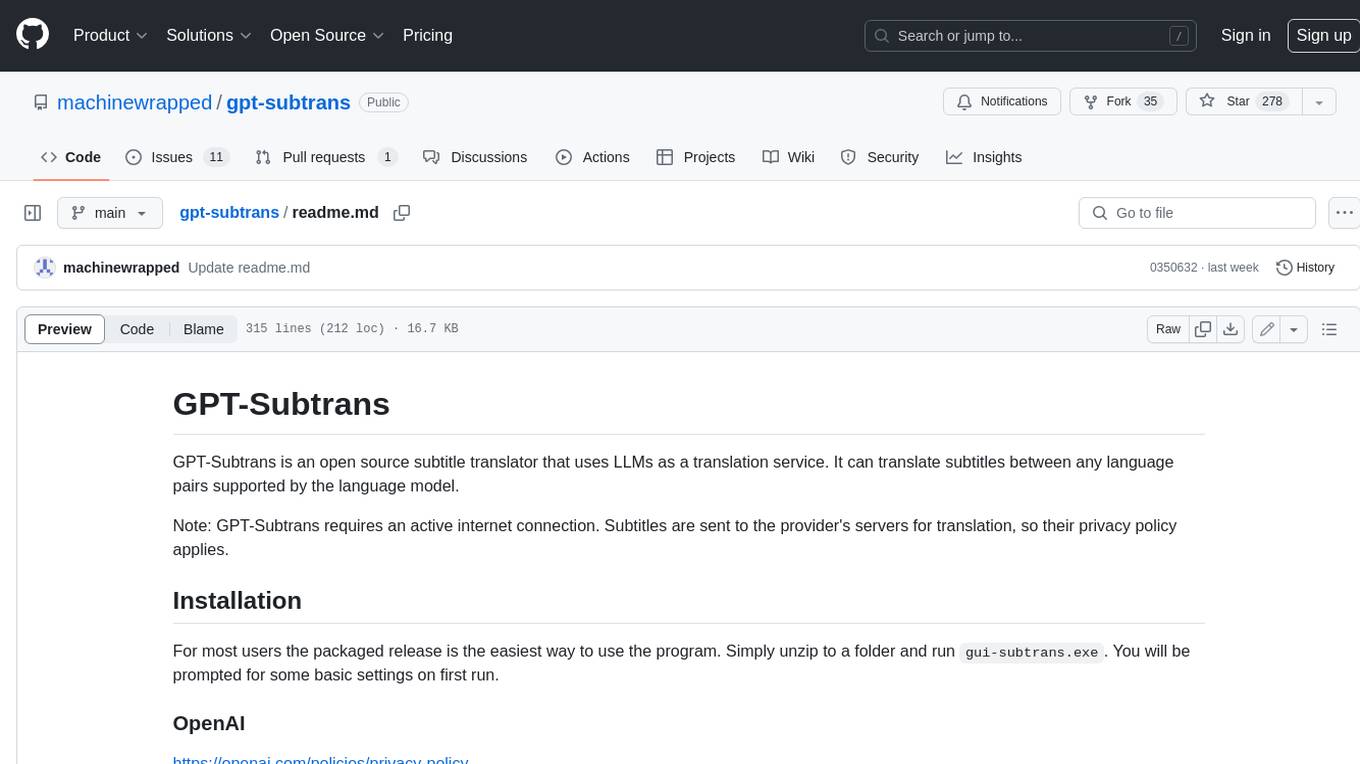
gpt-subtrans
GPT-Subtrans is an open-source subtitle translator that utilizes large language models (LLMs) as translation services. It supports translation between any language pairs that the language model supports. Note that GPT-Subtrans requires an active internet connection, as subtitles are sent to the provider's servers for translation, and their privacy policy applies.
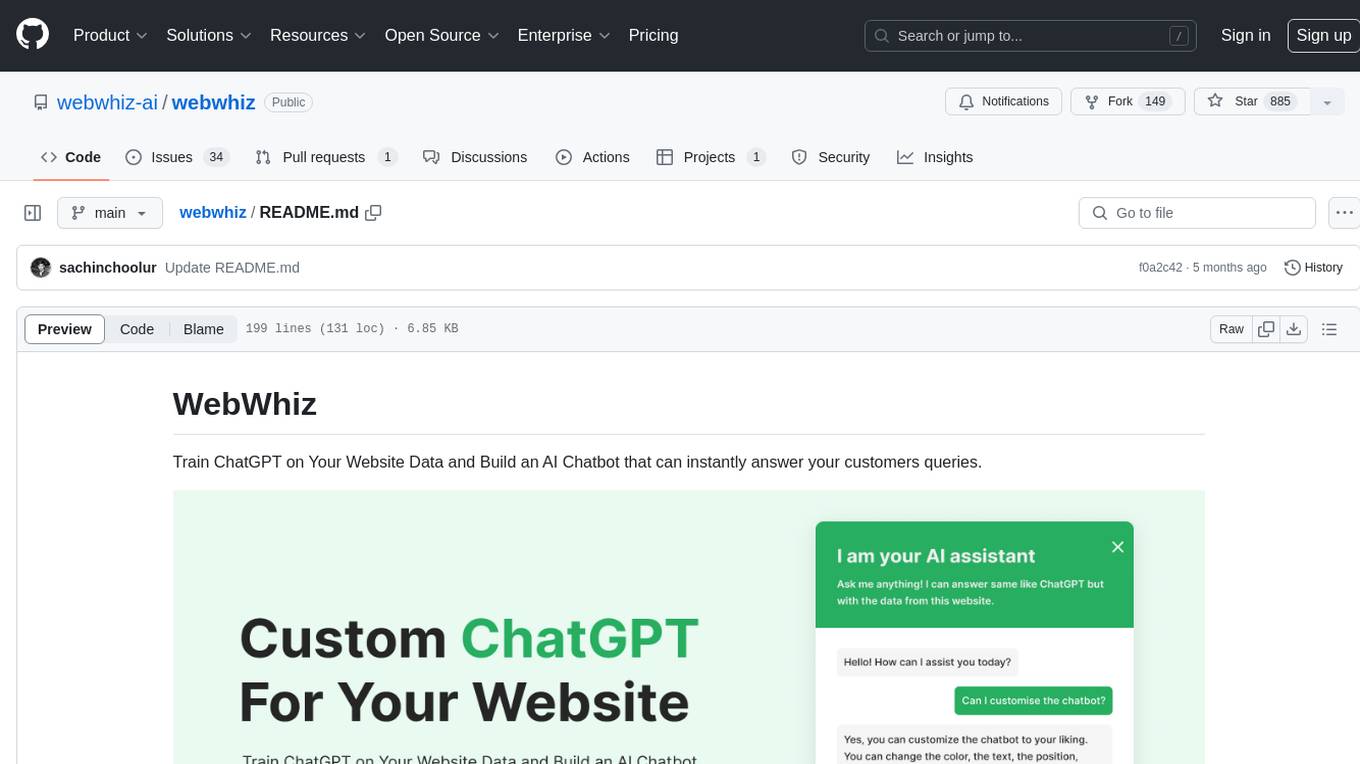
webwhiz
WebWhiz is an open-source tool that allows users to train ChatGPT on website data to build AI chatbots for customer queries. It offers easy integration, data-specific responses, regular data updates, no-code builder, chatbot customization, fine-tuning, and offline messaging. Users can create and train chatbots in a few simple steps by entering their website URL, automatically fetching and preparing training data, training ChatGPT, and embedding the chatbot on their website. WebWhiz can crawl websites monthly, collect text data and metadata, and process text data using tokens. Users can train custom data, but bringing custom open AI keys is not yet supported. The tool has no limitations on context size but may limit the number of pages based on the chosen plan. WebWhiz SDK is available on NPM, CDNs, and GitHub, and users can self-host it using Docker or manual setup involving MongoDB, Redis, Node, Python, and environment variables setup. For any issues, users can contact [email protected].

aider-composer
Aider Composer is a VSCode extension that integrates Aider into your development workflow. It allows users to easily add and remove files, toggle between read-only and editable modes, review code changes, use different chat modes, and reference files in the chat. The extension supports multiple models, code generation, code snippets, and settings customization. It has limitations such as lack of support for multiple workspaces, Git repository features, linting, testing, voice features, in-chat commands, and configuration options.
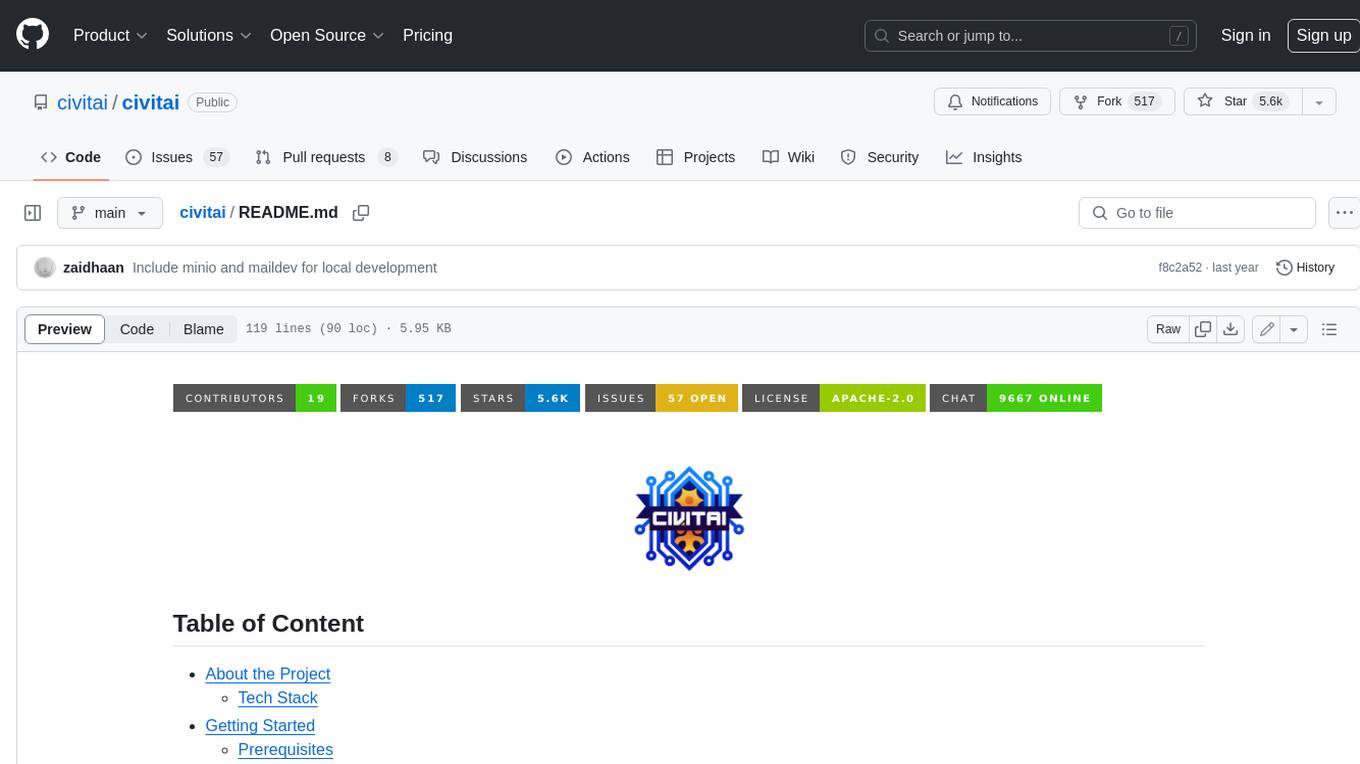
civitai
Civitai is a platform where people can share their stable diffusion models (textual inversions, hypernetworks, aesthetic gradients, VAEs, and any other crazy stuff people do to customize their AI generations), collaborate with others to improve them, and learn from each other's work. The platform allows users to create an account, upload their models, and browse models that have been shared by others. Users can also leave comments and feedback on each other's models to facilitate collaboration and knowledge sharing.
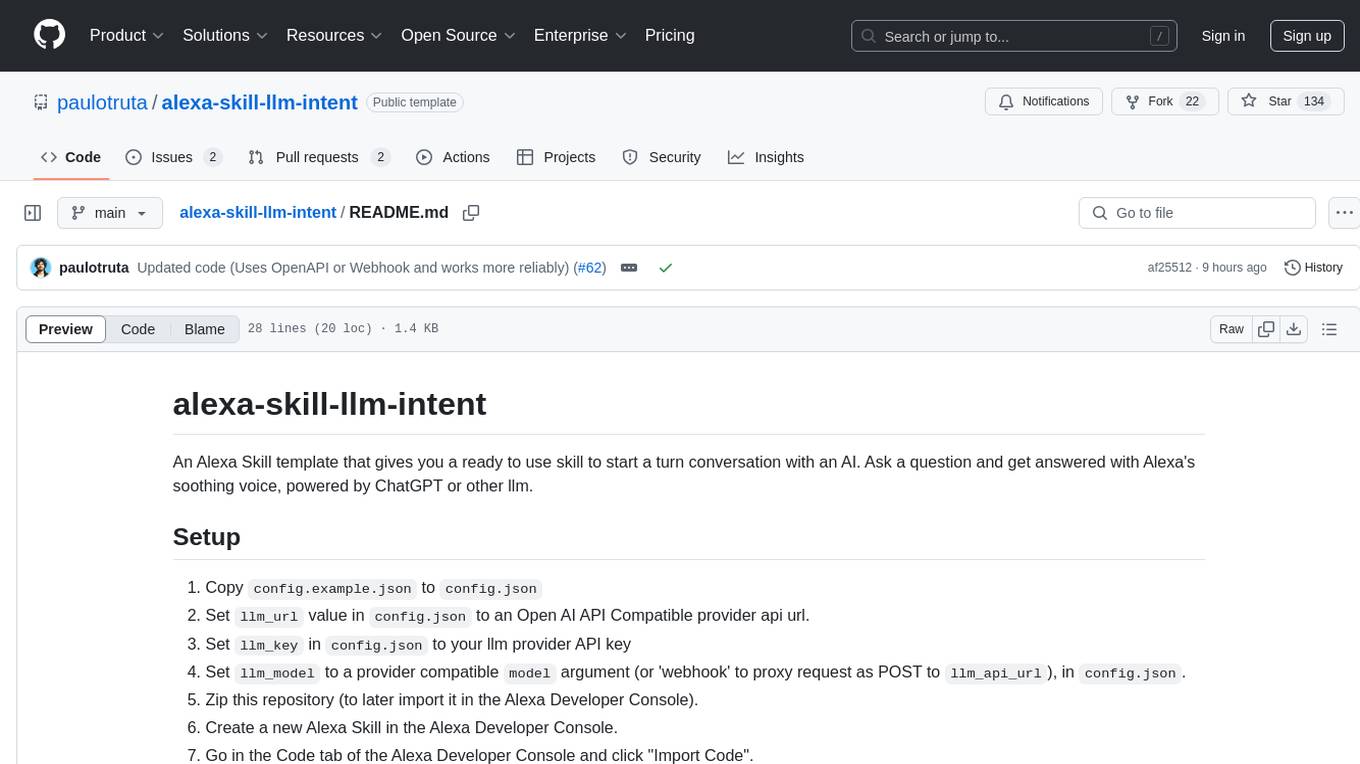
alexa-skill-llm-intent
An Alexa Skill template that provides a ready-to-use skill for starting a conversation with an AI. Users can ask questions and receive answers in Alexa's voice, powered by ChatGPT or other llm. The template includes setup instructions for configuring the AI provider API and model, as well as usage commands for interacting with the skill. It serves as a starting point for creating custom Alexa Skills and should be used at the user's own risk.
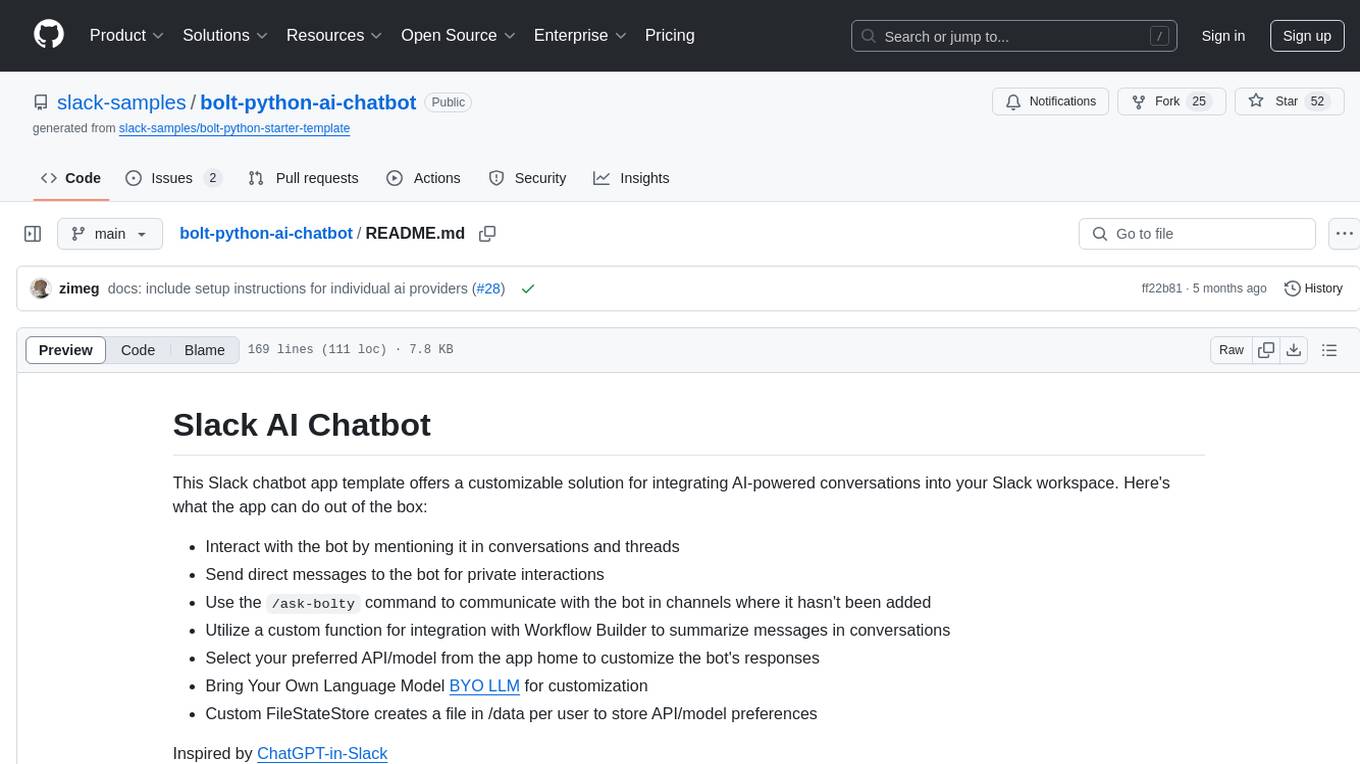
bolt-python-ai-chatbot
The 'bolt-python-ai-chatbot' is a Slack chatbot app template that allows users to integrate AI-powered conversations into their Slack workspace. Users can interact with the bot in conversations and threads, send direct messages for private interactions, use commands to communicate with the bot, customize bot responses, and store user preferences. The app supports integration with Workflow Builder, custom language models, and different AI providers like OpenAI, Anthropic, and Google Cloud Vertex AI. Users can create user objects, manage user states, and select from various AI models for communication.
For similar tasks

Discord-AI-Selfbot
Discord-AI-Selfbot is a Python-based Discord selfbot that uses the `discord.py-self` library to automatically respond to messages mentioning its trigger word using Groq API's Llama-3 model. It functions as a normal Discord bot on a real Discord account, enabling interactions in DMs, servers, and group chats without needing to invite a bot. The selfbot comes with features like custom AI instructions, free LLM model usage, mention and reply recognition, message handling, channel-specific responses, and a psychoanalysis command to analyze user messages for insights on personality.
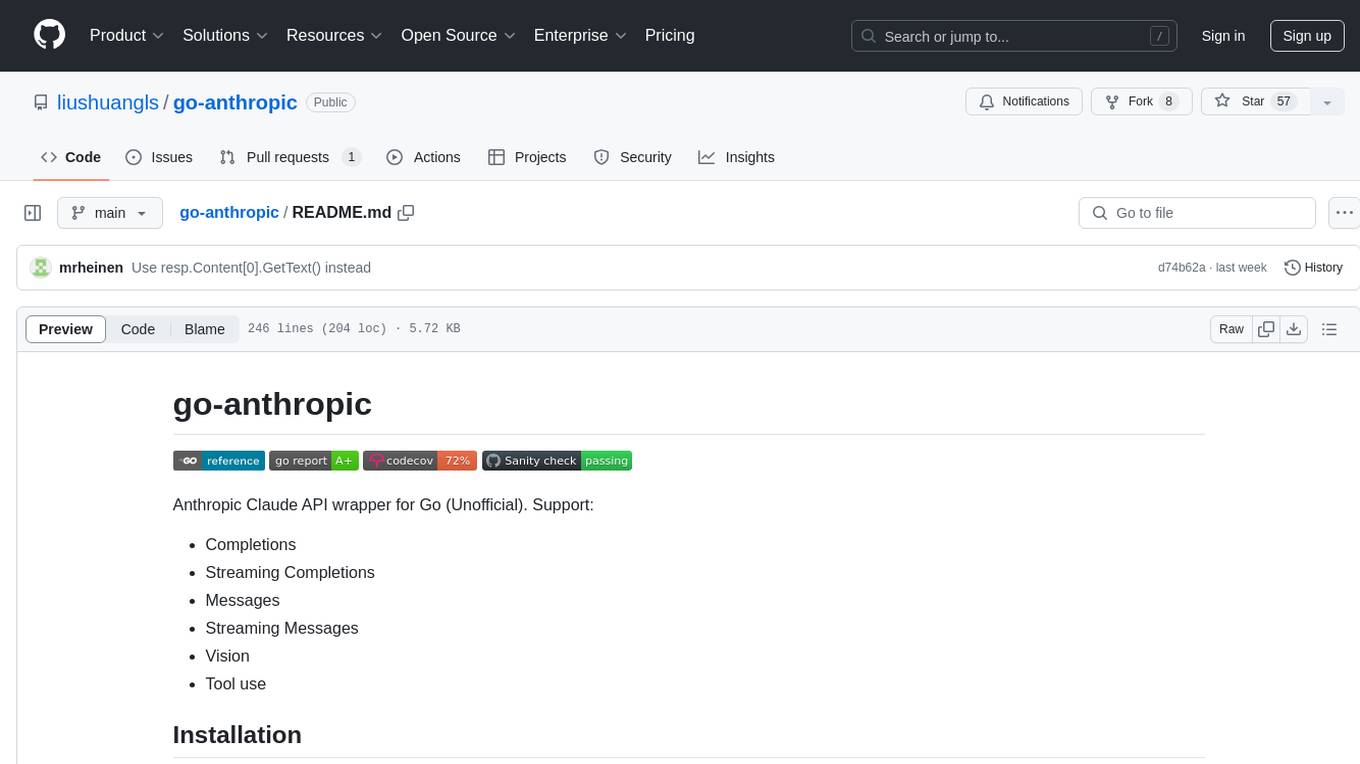
go-anthropic
Go-anthropic is an unofficial API wrapper for Anthropic Claude in Go. It supports completions, streaming completions, messages, streaming messages, vision, and tool use. Users can interact with the Anthropic Claude API to generate text completions, analyze messages, process images, and utilize specific tools for various tasks.
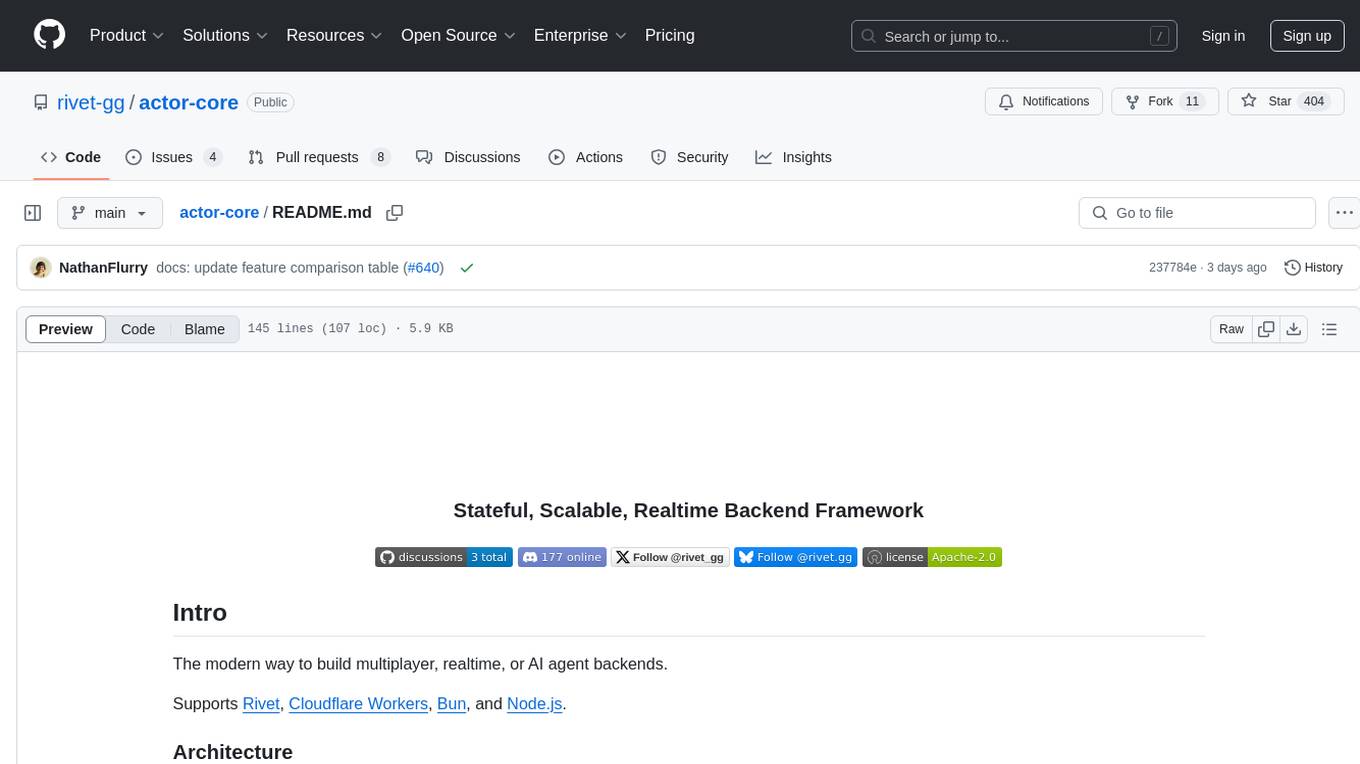
actor-core
Actor-core is a lightweight and flexible library for building actor-based concurrent applications in Java. It provides a simple API for creating and managing actors, as well as handling message passing between actors. With actor-core, developers can easily implement scalable and fault-tolerant systems using the actor model.
For similar jobs

sweep
Sweep is an AI junior developer that turns bugs and feature requests into code changes. It automatically handles developer experience improvements like adding type hints and improving test coverage.

teams-ai
The Teams AI Library is a software development kit (SDK) that helps developers create bots that can interact with Teams and Microsoft 365 applications. It is built on top of the Bot Framework SDK and simplifies the process of developing bots that interact with Teams' artificial intelligence capabilities. The SDK is available for JavaScript/TypeScript, .NET, and Python.

ai-guide
This guide is dedicated to Large Language Models (LLMs) that you can run on your home computer. It assumes your PC is a lower-end, non-gaming setup.

classifai
Supercharge WordPress Content Workflows and Engagement with Artificial Intelligence. Tap into leading cloud-based services like OpenAI, Microsoft Azure AI, Google Gemini and IBM Watson to augment your WordPress-powered websites. Publish content faster while improving SEO performance and increasing audience engagement. ClassifAI integrates Artificial Intelligence and Machine Learning technologies to lighten your workload and eliminate tedious tasks, giving you more time to create original content that matters.

chatbot-ui
Chatbot UI is an open-source AI chat app that allows users to create and deploy their own AI chatbots. It is easy to use and can be customized to fit any need. Chatbot UI is perfect for businesses, developers, and anyone who wants to create a chatbot.

BricksLLM
BricksLLM is a cloud native AI gateway written in Go. Currently, it provides native support for OpenAI, Anthropic, Azure OpenAI and vLLM. BricksLLM aims to provide enterprise level infrastructure that can power any LLM production use cases. Here are some use cases for BricksLLM: * Set LLM usage limits for users on different pricing tiers * Track LLM usage on a per user and per organization basis * Block or redact requests containing PIIs * Improve LLM reliability with failovers, retries and caching * Distribute API keys with rate limits and cost limits for internal development/production use cases * Distribute API keys with rate limits and cost limits for students

uAgents
uAgents is a Python library developed by Fetch.ai that allows for the creation of autonomous AI agents. These agents can perform various tasks on a schedule or take action on various events. uAgents are easy to create and manage, and they are connected to a fast-growing network of other uAgents. They are also secure, with cryptographically secured messages and wallets.

griptape
Griptape is a modular Python framework for building AI-powered applications that securely connect to your enterprise data and APIs. It offers developers the ability to maintain control and flexibility at every step. Griptape's core components include Structures (Agents, Pipelines, and Workflows), Tasks, Tools, Memory (Conversation Memory, Task Memory, and Meta Memory), Drivers (Prompt and Embedding Drivers, Vector Store Drivers, Image Generation Drivers, Image Query Drivers, SQL Drivers, Web Scraper Drivers, and Conversation Memory Drivers), Engines (Query Engines, Extraction Engines, Summary Engines, Image Generation Engines, and Image Query Engines), and additional components (Rulesets, Loaders, Artifacts, Chunkers, and Tokenizers). Griptape enables developers to create AI-powered applications with ease and efficiency.





